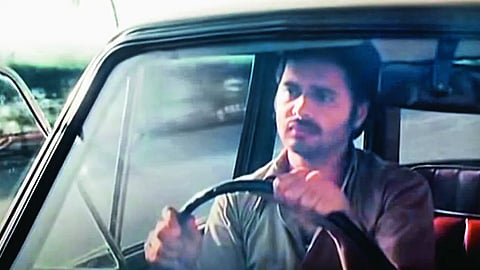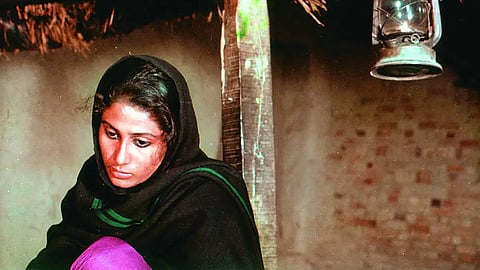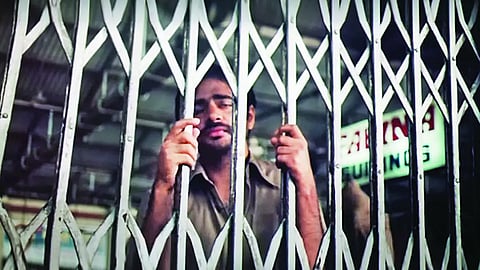My first job in what was then Bombay was with Air India. I worked there as an advertising executive from 1970 to 1981. Finally, I quit when I had to make a career choice between the job and directing Umrao Jaan. Air India was the flashiest job one could ask for, but equally stressful and challenging. On one hand, I was living a hand-to-mouth existence as all my salary went into covering the house rent but on the other, I was allowed to dream big. I loved the freedom and power it gave me. I could buy art for Air India or send people abroad. I could get a building made. Any wish I had was practically granted. Even though my interest in films had started earlier while I was assisting Satyajit Ray in Calcutta, it was at Air India that I got a working knowledge of filmmaking when I got a chance to commission an inflight film for the brand. Back then, I was preoccupied with painting. My first solo exhibition was in Calcutta in 1968, and my second one was at the Pundole art gallery in Bombay in 1972.
The Bombay Ghazal: The Nightmare Behind The 'City Of Dreams'
Penned by Shahryar and composed by Jaidev, the song 'Seene Mein Jalan' from 'Gaman' speaks about helplessness and dispossession at the heart of the film
I directed my debut film Gaman (1978), while I was still at Air India. It was made on a Rs 3.5 lakh loan from FFC (now NFDC, National Film Development Corporation of India). We would jokingly call it the ‘lungi film’, a reference to its modest budget. Today, where can you find takers for such unconventional subjects? For me, it’s a bridge film, as it blurs my roots with my boots, so to speak. It is about the so-called City of Dreams which was pulling in millions of people like me. Gaman’s taxi driver protagonist Ghulam Hasan (essayed by the late Farooq Sheikh) was one of them. The Air India office was on the 18th floor at Marine Drive (incidentally, my rented apartment at the time, too, was on the 18th floor of a building called Palm Springs in Cuffe Parade). Every morning, when I would look out of the window, I used to wonder who was this guy under the yellow roof of the taxi? Baking in the sun and waiting for customers. Driving through the city, he must be experiencing the various facets of the city and all kinds of situations, people and problems. There was a certain anonymity about him. I wanted to have an underprivileged character like him as a hero for Gaman.

I had long been disillusioned with feudalism and found it neither attractive nor useful. In fact, you will find both a celebration and criticism of feudalism in Umrao Jaan (1981). This humanism is a gift from my father who was a Marxist and always stood for equality and justice. My values were also shaped by my mother and Sufi philosophy later in life, in equal measure. For example, Khwaja Mu’in al-Din Chishti of Ajmer is universally known as Gharib Nawaz because he reached out to the have-nots. In a way, Gaman is a very Gharib Nawaz-ish film, as it takes up the cause of the poorest of the poor.

The heart of Gaman is helplessness and dispossession. Written by Shahryar, the song, Seene Mein Jalan captures the truth of the city and those trying to build a home in it. I remember our music director Jaidev wanted Farooq to lip sync the ghazal, but I think its potency and universality comes from the fact that it stays in the backdrop to reflect the character’s emotion and tension. The song touched a chord because Gaman’s music is not one of romance. It’s the music of life, the music of being alive and of sensitivity, pain, angst and concern. When I first read this ghazal in Shahryar’s anthology Ism-E-Azam as a student in Aligarh, I loved it instantly. Ironically, it wasn’t written keeping Bombay in mind but over the decades, it has become a song that defines this city and its unending struggles. I was also fortunate enough to use Makhdoom Mohiuddin’s poignant ghazal, Aapki Yaad Aati Rahi which conveys the longing of Khairun, the new bride (played by Smita Patil) left behind in the village, pining endlessly for Ghulam’s return. Poet Faiz Ahmad Faiz, himself a famous Marxist, was moved by the film, describing it as “a poem in visuals”. For me, Gaman is like a ghazal on Bombay.

The angst that I tried to express through the narrative can still be found on Mumbai’s streets. But when I made the film, that angst was still fresh. It was a time when Shiv Sena was just coming up and the whole conflict between migrants and locals was rife and waiting to be turned into a burning political issue. The Shiv Sena built its politics around the idea that employment opportunities in Bombay were being taken away by migrants from UP and Bihar. That galvanised the Marathi manoos. The film touches upon this problem, apart from looking at the agrarian crisis as well. The reason why someone like Ghulam lands up in Bombay in the first place is because he has no job back in the village and there’s no way to make a lucrative business out of land.

Every migrant has his day and his own journey. Ghulam is trapped in the city. Thankfully, I could flee. I had the best time of my life working as a migrant in Bombay. But right now, the culture of Bombay that I had known is dying and is being overpowered by a cultural fabric that is not good for the well-being of any progressive society. It’s much more cut-throat and insecure than when I was living there. Frankly, the city doesn’t mean much to me today. It meant what it meant when it meant, you know what I mean? I have seen it all and have moved on to other muses. The only way I could get reacquainted with Mumbai is if I make another Gaman. But it won’t be worth it.
(This appeared in the print edition as "The Bombay Ghazal")
(As told to Shaikh Ayaz)
Muzzafar Ali is a filmmaker based in Gwal Pahari, Gurugram